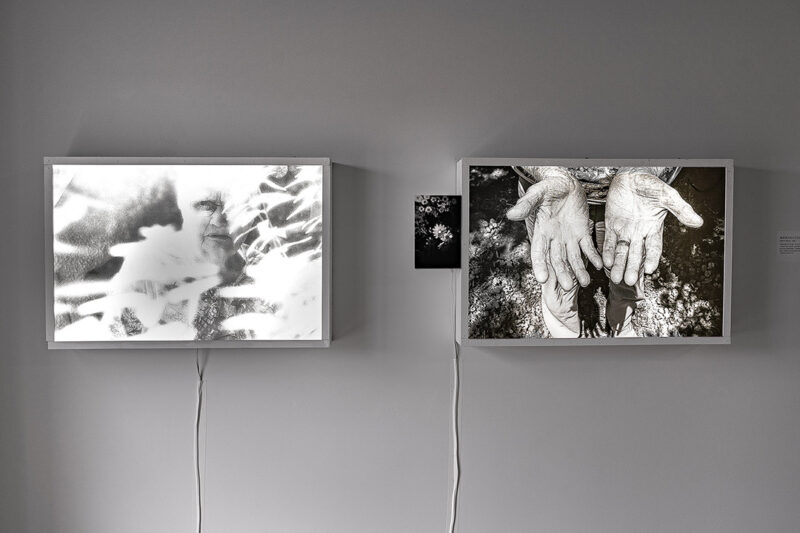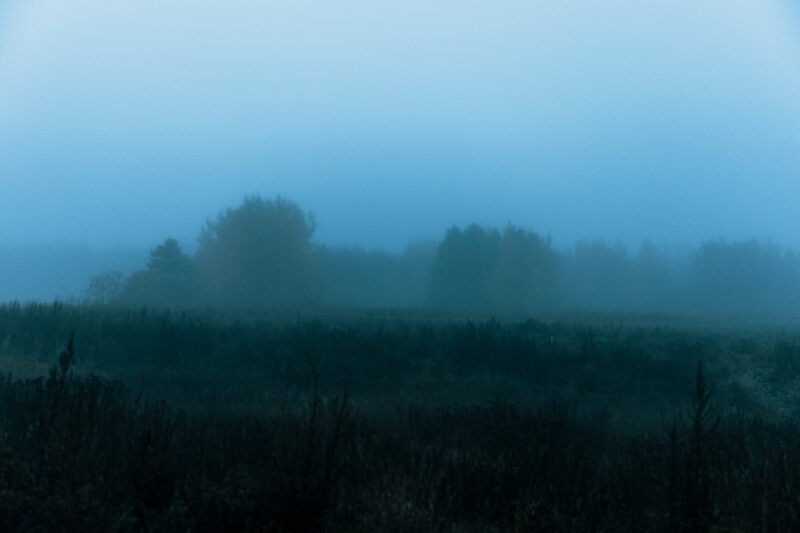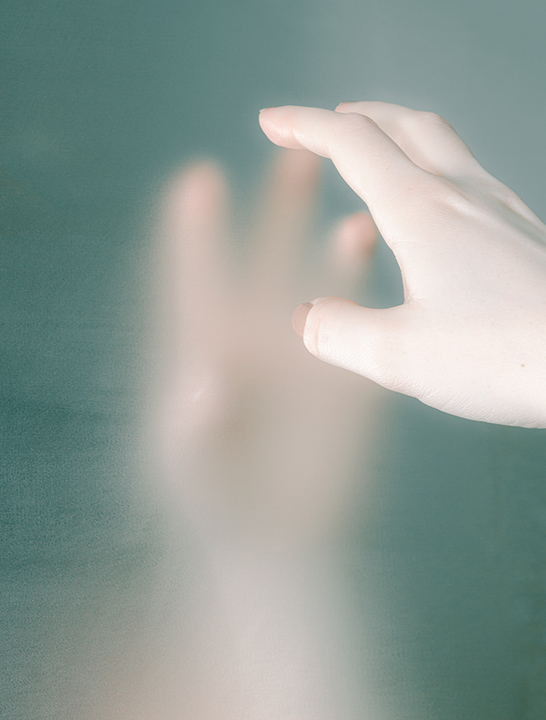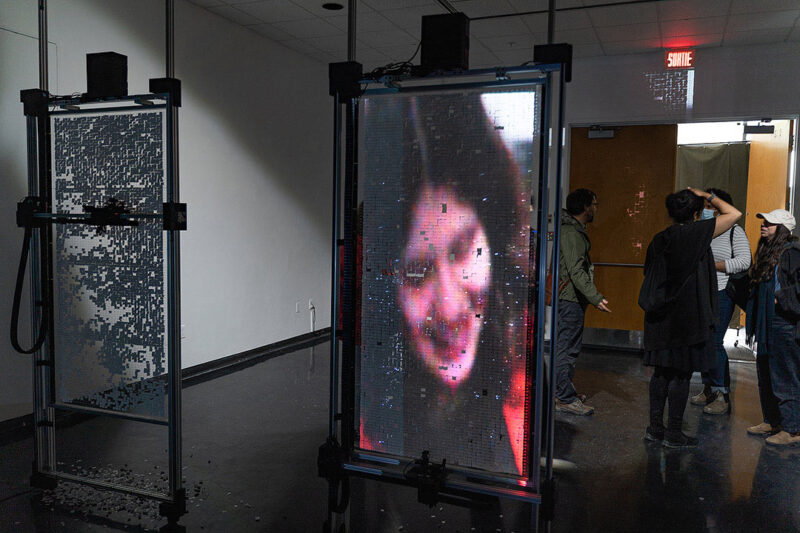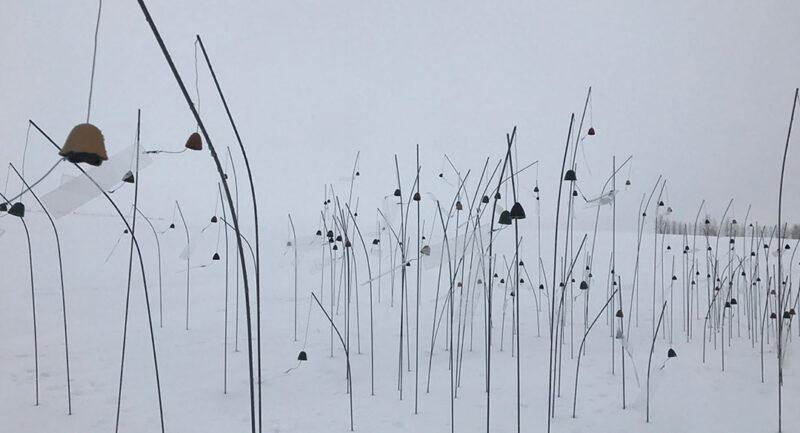[May 31, 2023]
By Baptiste Grison
PHOS
10th anniversary, Matane and Matanie
12.05.2023 – 18.06.2023
Anyone who has been a regular visitor to the springtime PHOS Photo + art festival in Matane over the years will have noted the characteristics that have become its trademark: a program that’s plentiful and wide-ranging (both physically throughout the town and in content), taking risks and liberties, and a generous showcase for photography students from the local college, who get an opportunity to show their work publicly for the first time. And of course, there are the venues: for lack of proper infrastructure, the organizers have learned to work with what is available, developing expertise in occupying locations in more or less dilapidated industrial hinterlands. The central idea, certainly, is a celebration of photography – PHOS is closely linked with the artist-run centre Espaces F, with which it shares staff and offices – but the festival focuses also, and mainly, on the entire field of digital imagery – still, animated, synthesized – and multidisciplinary practices.
Things are no different in the 2023 edition, which marks the event’s tenth anniversary, and there’s no obvious theme linking the programming as a whole. That’s not important, because it isn’t the intention. “We’re looking for experimentation, radical thinking, new languages,” says Gilles Arteau, founder of the event and in his final year as curator. “The idea is to explore how image practices combine with contemporary art practices.”
Among the offerings, the interactive installation Entropie by Saguenay artist Paolo Almario is a stand-out. In a large gallery in the Complexe culturel Joseph-Rouleau, visitors find four rectangular projection surfaces, each composed of 4,800 pieces of white plastic, like so many materialized pixels. When they face one of these surfaces, their likeness is captured by an array of hidden cameras equipped with a facial-recognition system, and projected on one of the screens. Then, a robot placed behind the projection surface is activated; it is programmed to select and withdraw, arbitrarily, a few bits of the image; the plastic pieces fall to the floor of the gallery with a cold clatter.
The installation self-destructs; as time passes and the surface is increasingly altered, we are left with a multitude of relevant, burning questions: what is our identity worth in a world swamped with representations? How do we evade the growing numbers of cameras that analyze us without our knowledge? What traces of us are conserved in the mass of data collected? And above all, how many other of these “intelligent” technologies that we create are likely to destroy us in this way? With its many possibilities for interpretation, Entropie both fascinates and provokes deep uneasiness, and its significance and contemporaneity leap to the eye.
In an adjacent gallery, a second interactive audiovisual installation, appropriately titled Point de fuite, offers a completely different experience, replete with abstraction and poetry. The artist, Alexis Langevin-Tétrault, took advantage of the occasion on the opening evening to perform with his own apparatus, deploying a series of coloured cables that converge at a single point at the back of the room, merging in a distant perspective. These definers of the space may be stretched or loosened by mechanical rollers: each action sets in motion a series of tension sensors linked to LED lights, a video projector, and an audio device that combine to generate an intriguing, constantly changing multisensory experience.
Visitors have yet another experience with the unclassifiable show on the program for the first Saturday of PHOS: Arteau’s Le Carougeois, billed as a “multidisciplinary stage work,” featuring two image artists and a sound designer working with a metaphor-rich text, recited by the synchronized voices of Carole Nadeau and Sylvain Miousse. As Mériol Lehmann (also a photographer) modulates sounds from the narrators’ speech, Marcelle Hudon insightfully creates live images on an overhead projector, a technically archaic apparatus, feeding it with a motley collection of objects to form sorts of ephemeral photographs springing from an improbable cabinet of curiosities. All this while Steve Verreault experiments with projections of animated images. It is difficult, in such a context, to grasp with certainty the overall intention: it is no doubt much more reasonable to drop one’s guard and let oneself be swept away by the flow of signs that emerge from everywhere.
As chock-full as it is, PHOS is organized by a small team; both the one-off activities and the vernissages are spread throughout the month of the event. At time of writing, several other curiosity-provoking offerings had not yet taken shape.
This is the case for Phosphoros, Jean-Yves Vigneau’s in situ work that addresses, in light, the issue of phosphorus in industrial agriculture, somewhere in a field in Saint-Léandre, and for Matières immortelles pour les oubliés, an installation in which the Matane artist Mathieu Savoie revisits the local archives. And, especially, a work planned for the village of Sainte-Félicité, Dessins à numéro, “a video projection in a public space and a performative deployment” commissioned from the multidisciplinary artist Jocelyn Robert, who takes inspiration from the French artist Christian Boltanski’s Animitas (blanc).
So, Boltanski. Two years after his death, he provides a fitting finale for PHOS 2023. In 2017, for La Manif d’art 8 – La biennale de Québec, he installed eight hundred small Japanese bells to tinkle in the wind, reproducing a sky map in a snowy field on Île d’Orléans. Animitas (blanc), the video work made from Boltanski’s work, lasts eleven hours; it will be presented in Matane in the Espaces F gallery until September. So, there’s every reason to have an enjoyable stop on the road around the Gaspé Peninsula. Translated by Käthe Roth
Baptiste Grison is a photographer, video artist, and, occasionally, exhibition curator. He holds a bachelor’s degree in art history and a master’s degree in visual arts. In his work, he explores mainly the personal ways in which we experience the land, starting with that of the maritime St. Lawrence River. He lives and works in Le Bic.

